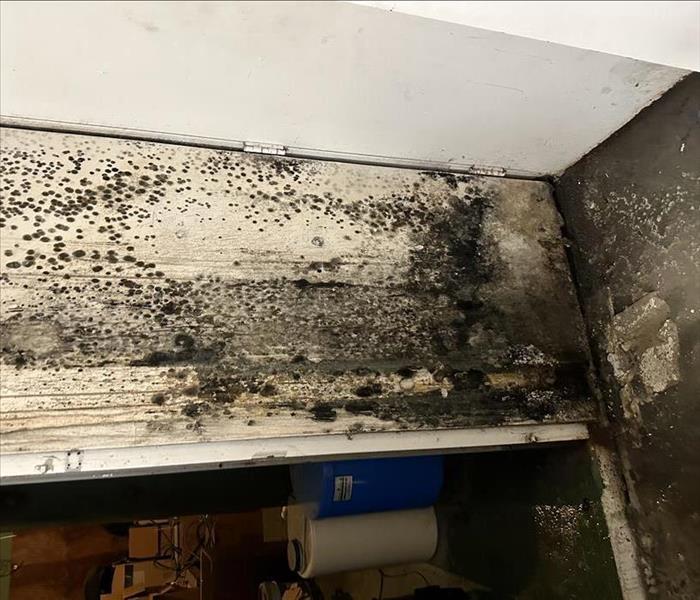Removing Mold Stains from Clothing and Fabrics
3/13/2024 (Permalink)
Discovering mold stains on your clothing and fabrics can be distressing. While mold growth poses potential risks to your property, it is possible to remove mold stains from clothes and fabrics with the right techniques. In this blog, we will explore how to effectively eliminate mold stains and restore your items.
Assess the Damage
Before attempting to remove mold stains, it is important to assess the extent of the damage and consider the fabric type. Some delicate fabrics may require professional cleaning to avoid damaging the fibers. Here are some initial steps to take:
- Take affected clothing and fabrics outside to prevent mold spores from spreading within your home.
- Brush off any loose mold spores or residue from the surface.
- If the mold stains are extensive or on delicate fabrics, consider seeking professional assistance from companies like SERVPRO® who specialize in mold restoration services.
Pre-Treatment
Before washing the stained items, it's important to pre-treat them:
- Mix a solution of one part white vinegar to three parts water in a spray bottle.
- Spray the affected areas generously with the vinegar solution.
- Allow the solution to penetrate the fabric for 10-15 minutes to help neutralize the mold stains and odor.
Washing Machine Method
For machine-washable items, follow these steps:
- Add a cup of white vinegar to the washing machine along with your regular detergent.
- Place the mold-stained items in the machine and wash them using the hottest water temperature allowed for the fabric.
- For colored fabrics, use oxygen bleach instead of chlorine bleach to prevent color fading.
- After washing, inspect the items. If any stains remain, repeat the pre-treatment step and wash them again.
Handwashing Method
For delicate or non-machine washable items, follow these steps:
- Fill a basin or sink with warm water and add a small amount of mild detergent.
- Submerge the mold-stained items and gently agitate them for a few minutes.
- Allow the items to soak in the soapy water for at least 30 minutes.
- Rinse the items thoroughly with clean water to remove all soap residue.
- Inspect the items. If any stains remain, repeat the pre-treatment step and handwash them again.
Drying
After washing, it's important to dry the items properly to prevent mold regrowth:
- Hang the items outdoors, preferably in sunlight, as sunlight has natural disinfectant properties.
- If outdoor drying is not possible, hang the items indoors near a fan or in a well-ventilated area.
- Ensure the items are completely dry before storing them to prevent moisture accumulation and potential mold growth.
Professional Assistance
If mold stains persist or if you are uncertain about treating certain fabrics, it is advisable to consult professionals who specialize in mold restoration services. They have the expertise and equipment to effectively remove mold stains from a variety of fabric types.
Removing mold stains from clothing and fabrics can be challenging but with proper techniques and the right approach, it is possible to restore your items. Regularly inspect your clothes and fabrics for any signs of mold growth and take prompt action to eliminate stains. Remember, prevention is key, so ensure your home has proper ventilation and address any underlying moisture issues to minimize the risk of mold growth on your clothing and fabrics.






 24/7 Emergency Service
24/7 Emergency Service